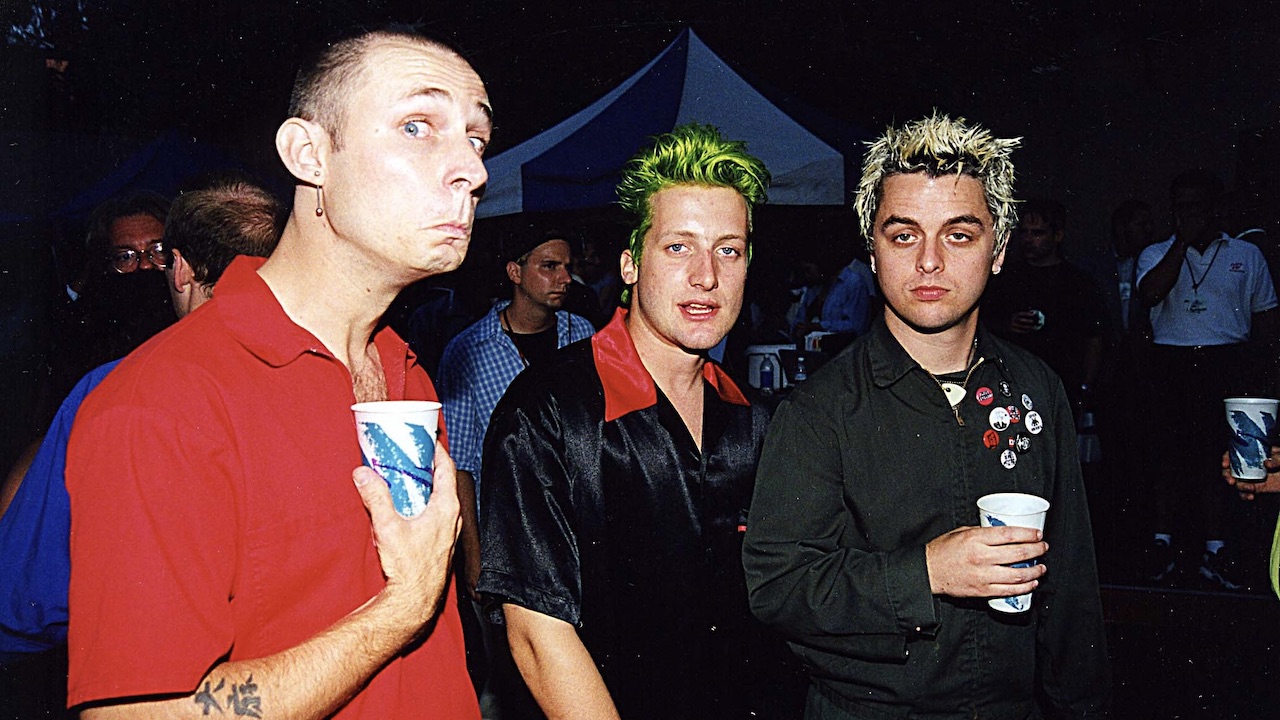"You don't look like a rock star, you don't write music like a rock star": how Joe Satriani confounded his label and recorded the one-take wonder that changed his life
Completely at odds with the guitar styles of the time, Joe Satriani’s out-of-this-world instrumental Surfing With The Alien caught the imagination of a generation

For all his kudos as a virtuoso, Joe Satriani’s adored classic is an exercise in pure… well, fun. It really is about going surfing with an alien. Rejecting the cooler-than-thou, chin-stroking twiddliness of many of his guitar peers, Surfing With The Alien burst on to the scene with a Silver Surfer motif and an insanely catchy, blues-rooted melody. True, this was teamed with eye-watering solos that peppered the album of the same name, but the Albert King core ensured its warmth and durability. Accordingly, shredders love it, but so do less niche rock enthusiasts.
Rewind to the mid-80s, and would‑be guitar heroes faced a difficult task. Preceded by eras of iconic players, so much ground had been covered, really well. “You’d look back and think: ‘My god, they’ve done everything!’” Satriani exclaims. “Hendrix took it so far out, yet there were players like Clapton who were saying: ‘I’m gonna make it blues, and not take it too far out.’ Even by the mid-seventies, when I was growing up in New York and playing clubs, there were the beginnings of punk rock, and disco was becoming strong as well… It made you scratch your head and think: ‘What am I gonna do?!’”
To his similarly dexterous comrades, the solution lay in terrifyingly fast shred and ‘fusion’ guitar. His friend and pupil Steve Vai was a leader in this regard, alongside the likes of Yngwie Malmsteen and Michael Schenker. But while Satriani operated at broadly the same technical level, he was never concerned with being a ‘shred king’ himself – even though Surfing is often credited as the record that popularised shred.
“Those guys like Yngwie were beautiful examples of players perfecting one thing,” he says. “I wasn’t like that. I was a collection of crazy influences that could be difficult to put on one record. I still wanted to celebrate Chuck Berry and West Montgomery. Plus I was still a kid who really liked playing Led Zeppelin and Black Sabbath.”
Following Satriani’s 1986 debut Not Of This Earth, plans began to hatch for an instrumental album that would properly embrace all his influences. On tour as lead guitarist with the Greg Kihn band, he recorded the beginnings of Surfing on a four-track cassette recorder. Convincing the suits at Relativity Records, however, proved the biggest challenge for Satriani and his co-producer John Cuniberti.
“I’m not lying when I say that myself and John thought it was the last record anybody would let us make,” Satriani says. “I remember the president, Barry Kobrin, saying: ‘You don’t look like a rock star, you don’t write music like a rock star, I’m not sure what we’re gonna do with you.’ So I said: ‘I want to make a record that celebrates all the guitar playing that I think is great, from Chuck Berry to Hendrix.’”
That night, Satriani performed a few songs at the China Club. Label honchos gave him the green light, and recording sessions began at Hyde Street Studios in San Francisco, where the title track was shaped by last-minute changes.
Sign up below to get the latest from Classic Rock, plus exclusive special offers, direct to your inbox!
“The day we laid down the rhythm section, there was a whole other part,” Satriani reveals, “but at the last minute I decided I didn’t need it. It was about thirty-two bars – a big chunk of music.”
The striking, instantly recognisable wah-wah sound was similarly unplanned: “I stuck my wah-wah pedal in my bag as I was leaving my apartment – I hadn’t played with it in years. I brought it to the studio, started playing, and we got something going with this harmoniser and thought: ‘Hey, this is a lot of fun.’”
Unfortunately they hadn’t been watching the clock. As a result, that iconic guitar melody was actually a one-take wonder. “It was 4pm and we were supposed to be out,” he recalls. “So I recorded the melody and end solo all in one go, and then we just unplugged everything and broke it all down. A few days later we listened to it and went: ‘Wow, that’s great! But we can’t do anything to it because we broke it all down!’”
Satriani had already grown a thick skin through years of playing and teaching. This experience kept him sane when he arrived in LA for mastering, to find the mixes for half the record were totally unbalanced due to a studio cock-up.
“The label was already upset because we’d spent twice as much money as we were supposed to,” he says. “So the studio said we could remix those five songs for free. We went back, remixed those that we thought were masterpieces – we had no recall, this was all analogue mixing – then we went back to LA and did the mastering all over. It was extremely traumatic.”
Eventually the record was completed and Satriani was asked to form a touring band. Until then he’d never performed as an instrumental artist. Having assembled bassist Stu Hamm and drummer Jonathan Mover, he turned to the laid-back physicality of Jeff Beck for inspiration, rather than the showmanship of his 80s contemporaries. “They were swirling guitars around their bodies, with huge hair and spandex,” he laughs, “and there I was standing on stage in jeans and a T-shirt with no singer.”
For all its elements at odds with rock convention, Surfing With The Alien caught on. To date it’s Satriani’s only album to have gone platinum. Two and a half weeks into its tour, the guitarist was asked to join Mick Jagger on the road for two months. By the time he returned he had a hit. And that title track, still a resounding fan favourite, began its path to guitar-hero immortality.
“It was insane,” he says. “I’d gone from being nobody to suddenly having a full page in Rolling Stone. It was meteoric.”

Polly is deputy editor at Classic Rock magazine, where she writes and commissions regular pieces and longer reads (including new band coverage), and has interviewed rock's biggest and newest names. She also contributes to Louder, Prog and Metal Hammer and talks about songs on the 20 Minute Club podcast. Elsewhere she's had work published in The Musician, delicious. magazine and others, and written biographies for various album campaigns. In a previous life as a women's magazine junior she interviewed Tracey Emin and Lily James – and wangled Rival Sons into the arts pages. In her spare time she writes fiction and cooks.
